Boston Latin School: Cassidy Conway (8th Grade Teacher)
Cassidy Conway
Grade 8 Unified Science Teacher
Boston Latin School, Boston, MA
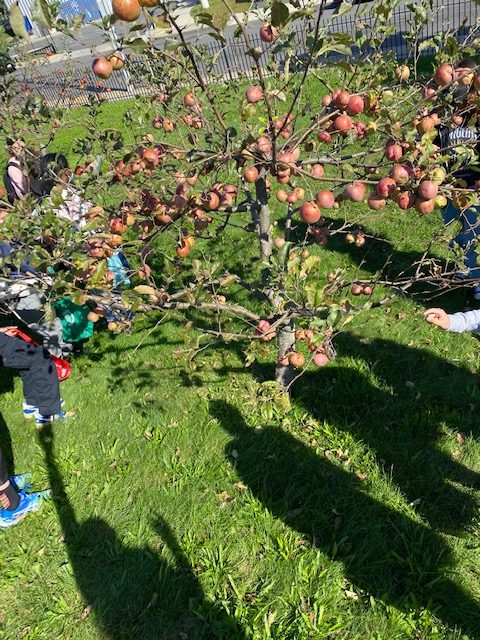 Right now at Boston Latin we have a greenhouse, an orchard, and grounds with various garden areas (like a strawberry patch and a couple of raised beds). None of it has been well maintained but my goal this year is to make it a part of my lessons. The school garden and greenhouse has occasionally been used by the AP Env Science students and by my 8th graders at the end of the school year as a teaching tool (where certain foods, like strawberries and apples, come from, for example).
Right now at Boston Latin we have a greenhouse, an orchard, and grounds with various garden areas (like a strawberry patch and a couple of raised beds). None of it has been well maintained but my goal this year is to make it a part of my lessons. The school garden and greenhouse has occasionally been used by the AP Env Science students and by my 8th graders at the end of the school year as a teaching tool (where certain foods, like strawberries and apples, come from, for example).
Students get a lot of different messages about food, but do not have nutrition as a class in our 7-12 exam school. Gardening at school is a way for students to explore healthy foods and consider the food systems they are a part of. The garden and greenhouse have not been accessed in a communal way, but if properly shared, it could help to teach the community about gardening. The greenhouse club has consistently grown garden plants from seed in the greenhouse to sell as a fundraiser each school year, such as tomatoes, peppers, marigolds.
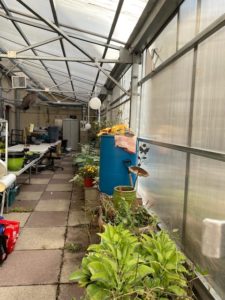 As far as advice for other schools who are interested in starting garden programs, I think it’s best to start with thinking about seasonal projects that can be done: for example, for fall, I plan to have students plant garlic for harvest in early summer when school ends. In winter we will center around planning and growing seedlings in the greenhouse. This year I’m diving in. I plan to make improvements to what we have and involve outside groups if possible. I do have some big ideas, but I think it’s best if students take the lead on them; I just need to plant the seed.
As far as advice for other schools who are interested in starting garden programs, I think it’s best to start with thinking about seasonal projects that can be done: for example, for fall, I plan to have students plant garlic for harvest in early summer when school ends. In winter we will center around planning and growing seedlings in the greenhouse. This year I’m diving in. I plan to make improvements to what we have and involve outside groups if possible. I do have some big ideas, but I think it’s best if students take the lead on them; I just need to plant the seed.
Hawlemont Elementary School: Amber Tulloch (Teacher)
Amber Tulloch
HAY Coordinator
Hawlemont Elementary
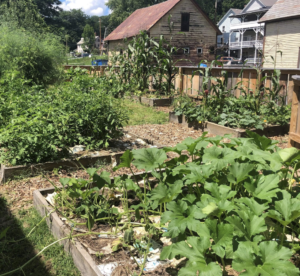 Our gardens are places where students really take the lead and get their hands dirty. Often, our garden work is collaborative, building on social and communication skills. This work can also be independent, allowing a student to ease almost meditative work. One of the greatest advantages of our school gardens is that they provide opportunities for students to succeed and thrive outside of academics. It’s important that we see and honor these accomplishments as they give us a better picture of who each of our children are.
Our gardens are places where students really take the lead and get their hands dirty. Often, our garden work is collaborative, building on social and communication skills. This work can also be independent, allowing a student to ease almost meditative work. One of the greatest advantages of our school gardens is that they provide opportunities for students to succeed and thrive outside of academics. It’s important that we see and honor these accomplishments as they give us a better picture of who each of our children are.
We use our school gardens as connections to academic learning whenever possible. Our third graders use the gardens as mathematical playgrounds as they explore area and perimeter. Kindergarteners maximize their learning of the life cycle by following a pumpkin from seed to decomposition while Fourth graders research and plant local flora to support our native pollinators.
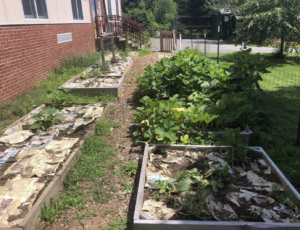 School gardens build empathy, for each other and the life around us, connect students to their food, and help develop the persistence and patience necessary for long-term goals.
School gardens build empathy, for each other and the life around us, connect students to their food, and help develop the persistence and patience necessary for long-term goals.
Our gardens are a large part of our school community life. Each class is responsible for at least one garden bed and everything they decide to grow within those little walls. The produce is used in class snacks, in our cafeteria meals, or as part of our school farmer’s market. Students often snack in our gardens throughout the day and are more apt to reach for vegetables because they took part in growing them.
Some advice I would give to other schools to get a school gardens program up and running…If it feels overwhelming, brainstorm the motivations behind starting a school garden. Is it for aesthetics, pollinator health, connection to food, social-emotional health? Run with one of those ideas to start. It’s ok for the garden to be small, it will be a haven all the same. Reach out to local businesses and ask for support- so many are ready to help you get your students in the dirt. We’ve been very fortunate to have the backing and generosity of many local businesses who donate time, materials, and funding for us to maintain and expand our gardens.
Hingham High School: Katie Roberts (K-12 Science Director)
Hingham
Katie Roberts
K-12 Science Director
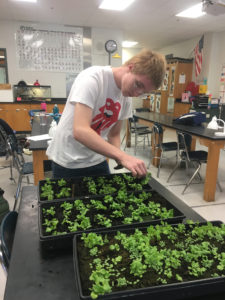 Working in our campus garden and greenhouse provides wonderful opportunities for students to engage with nature and collaborate with peers. Time spent engaged in gardening provides an opportunity for students to take a breath of fresh air and develop a sense of agency and connectedness.
Working in our campus garden and greenhouse provides wonderful opportunities for students to engage with nature and collaborate with peers. Time spent engaged in gardening provides an opportunity for students to take a breath of fresh air and develop a sense of agency and connectedness.
Our district has a K-12 gardening program, with raised beds at every school and a campus greenhouse at Hingham High. Gardening is integrated throughout our elementary science curriculum, in partnership with a local organic farm, Holly Hill. At the secondary level, in addition to garden beds, our middle school and high school are equipped with hydroponic arrays and terraponic grow towers, which provide additional opportunities for links to biology, chemistry, and environmental science courses.
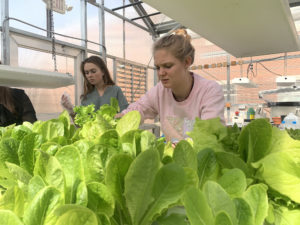 The garden and greenhouse provide opportunities for service learning and align with our school ethos of green stewardship and global citizenship. Produce from our garden and greenhouse is served in our school cafeteria, with a portion of our produce donated to the Hingham Food Pantry.
The garden and greenhouse provide opportunities for service learning and align with our school ethos of green stewardship and global citizenship. Produce from our garden and greenhouse is served in our school cafeteria, with a portion of our produce donated to the Hingham Food Pantry.
My advice to any school that wants to start a garden program is to start small with raised beds featuring hardy, cool weather crops such as spinach, kale and arugula. Terraponic lettuce grow racks are also a great entry point to get started and build success.
Phone: (413) 253-3844
Email: info@massfarmtoschool.org